The Marriage of the Millennium
Could the Union of Science and Spirituality Bring About a New Tipping Point?
What if science could contribute an understanding of the biological basis for enlightenment, and then, create new technologies to facilitate it? What if Eastern spiritual practices, honed over thousands of years, were combined with deep awareness of the stages of human growth and development discovered within the past hundred years by Western developmental psychologists? The possibilities inherent in such a fusion are astounding.
The books featured here explore these possibilities, give insights and practices to help us get there, and offer a stunning vision of what we might expect the world, and our lives, to look like should they come to fruition.
Integral Meditation
Mindfulness as a Way to Grow Up, Wake Up, and Show Up in Your Life
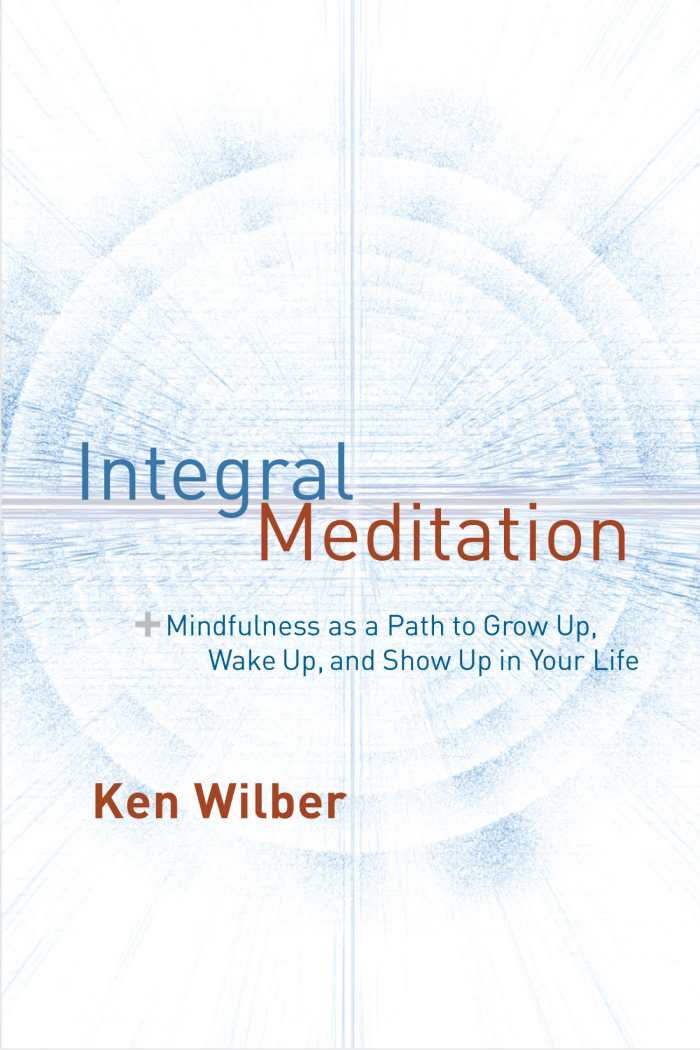
Ken Wilber
Shambhala
Softcover $16.95 (240pp)
978-1-61180-298-6
Buy: Local Bookstore (Bookshop), Amazon
To be whole, human beings need to both “wake up” and “grow up.” But while spiritual practices leading to waking up have been around for thousands of years, the stages of growing up have only been discovered by Western schools of developmental psychology within the last one hundred. According to Ken Wilber, no path or practice has ever adequately brought the two together, leaving humans effectively “broken” or “incomplete.” Think of spiritual masters who have never really “grown up” morally or psychosexually, or intelligent, successful people who are not Awakened or Enlightened.
Integral Meditation, which Wilber calls “the most effective growth and development program that exists in the world at this time,” combines practices for waking up from the ancient wisdom traditions (such as mindfulness) with practices, techniques, and thought-provoking evolutionary viewpoints (such as Integral Theory) for the major stages of growing up. The combination brings to light the hidden internal maps that lead to personal and planetary disaster, makes them conscious and objective, and instructs us in how we can uproot and replace them. The result, Wilber affirms, will be a profound shift to a healthier, happier, more authentic life, which he describes as seeming like “a series of exuberant flow states.”
Even more exciting and hopeful is Wilber’s assertion that the arrival of 10 percent of the world’s population at such a state will ignite humanity’s most profound tipping point.
KRISTINE MORRIS (August 26, 2016)
The Science of Enlightenment
How Meditation Works
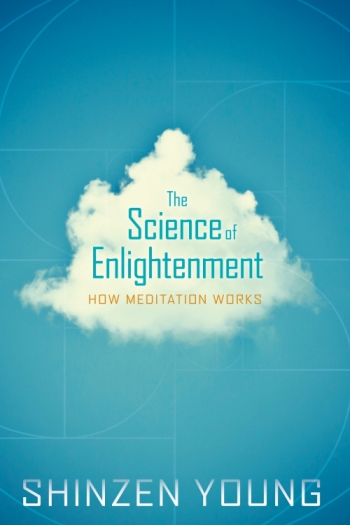
Shinzen Young
Sounds True
Hardcover $21.95 (256pp)
978-1-59179-460-8
Buy: Amazon
Part “hard-nosed researcher,” and part “poetic dharma teacher,” Shinzen Young brings fifty years of meditation experience and exploration of the best of what East and West have to offer to bear, showing how science and spirituality are coming together in what he calls the “Marriage of the Millennium.”
The experiences of meditators can now be measured and verified. In demonstrating that while their beliefs may differ, what happens in the neurological systems of adepts during contemplation is similar—so science supports the unity at the heart of the great spiritual traditions. Shinzen also describes his antimeditative childhood, how hashish followed by a chewy chocolate brownie once brought him to a state of samadhi and oneness, and how the horrific death of a beloved mentor transformed him from an armchair academic to a committed monastic. “Let me be clear: enlightenment is real,” he writes. “Not only is it real, but it is something that can be achieved by normal human beings through the systematic practice of meditation.”
Shinzen’s “happiest thought” involves two steps: first, discover a biophysical model for enlightenment (assuming that one exists), then create a technology to reliably facilitate it (if that’s possible). Such an achievement, he affirms, though not yet within reach, holds promise that enlightenment could go viral and dramatically change the course of human history for the better.
KRISTINE MORRIS (August 26, 2016)
Non-Duality Questions, Non-Duality Answers
Exploring Spirituality and Existence in the Modern World
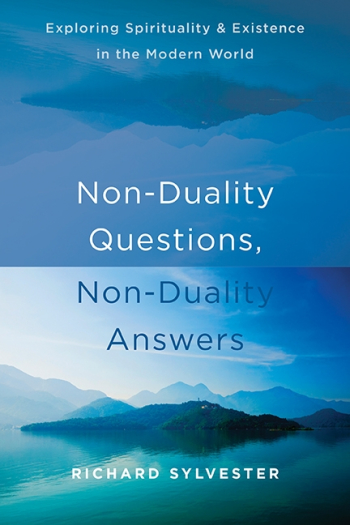
Richard Sylvester
Non-Duality Press
Softcover $16.95 (400pp)
978-1-62625-818-1
Buy: Local Bookstore (Bookshop), Amazon
What if, instead of struggling and straining to realize oneness, or working hard to become “totally present,” there was a much easier way? Humanistic psychologist and nonduality expert Richard Sylvester suggests that there is: we can just forget the struggle and relax. In order to do that, we have to let go of the stories we tell ourselves.
Calling nonduality “the great destroyer of stories,” he writes, “You can have stories about meaning and purpose and endeavor or you can have presence, the simplicity of leaves rustling in the breeze. You cannot have both,” adding that keeping our stories will cause us to miss the joy that comes with being present in the now, making our moments into shadows drained of life energy.
A response to the huge numbers of questions on nonduality and spiritual experiences he received over a ten-year period, Sylvester’s book covers topics that include karma and liberation, angels, anxiety, gurus, gratitude, meditation, paths and practices, quantum physics, predestination, relationships, reincarnation, suffering, the witness, unconditional love, and many more.
Compassionate, provocative, and even humorous, Sylvester’s answers to the fundamental questions that often leave spiritual seekers frustrated provide clarity on what nonduality is and what it isn’t; they paint a compelling picture of what a life lived in nondual awareness could be like, and offer confirmation that liberation through nondual awareness is within reach.
KRISTINE MORRIS (August 26, 2016)
Illuminating the Way
Embracing the Wisdom of Monks and Mystics
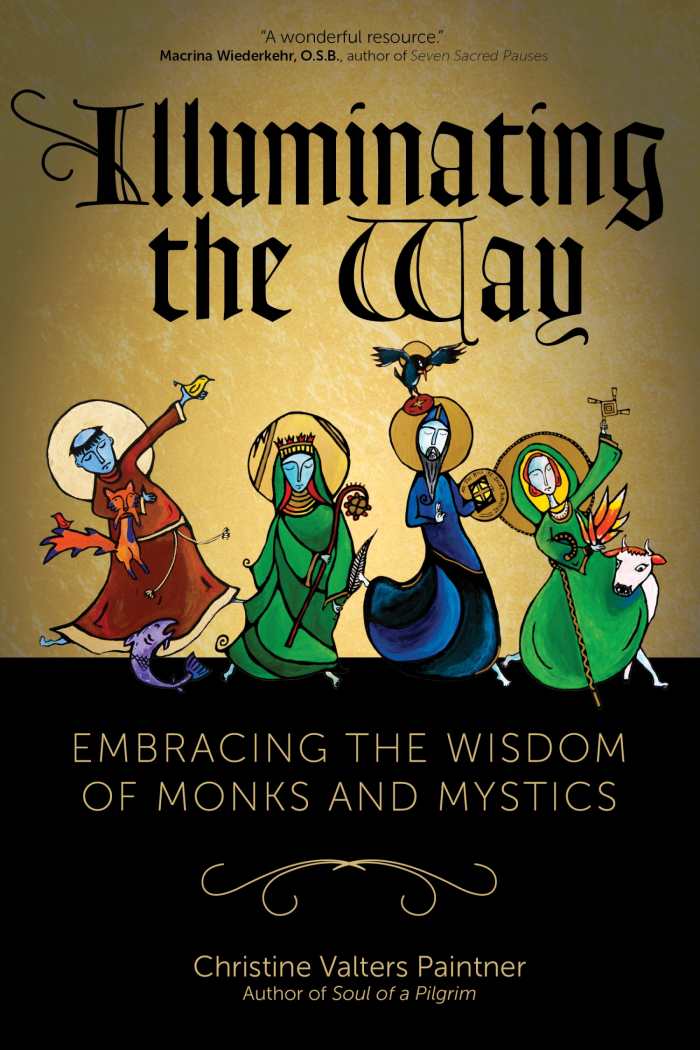
Christine Valters Paintner
Sorin Books
Softcover $17.95 (224pp)
978-1-933495-93-4
Buy: Local Bookstore (Bookshop), Amazon
Christine Valters Paintner, Abbess of the “virtual monastery” AbbeyoftheArts.com, and author of eight books, explores the Christian spiritual path through the stories of twelve monks and mystics, ancient and modern. Each story illustrates the energies of a particular archetype and invites us to consider how the biblical injunction to welcome the stranger could equally be applied to welcoming the parts of ourselves that we try so hard to hide and repress.
Included are vignettes of Francis of Assisi, the “Fool” who invites us into “an upside-down world governed by love”; King David, who calls us to claim our inner “Sovereign” and rule as our true self; Benedict of Nursia, the “Sage” whose wisdom reveals each moment as shimmering with sacred light; Mary, the “Mother” whose love carries us through birth and death; Dorothy Day, whose work on behalf of the outcast and poor calls us to welcome and comfort our inner “Orphan”; Rainer Maria Rilke, the poet who inspires our inner “Artist” to create beauty from all that we are given; Thomas Merton, whose seeking of God in silence and solitude helps us awaken our own inner “Monk”; and more.
Paintner’s book is rich with colorful paintings, creative exercises, commentaries, scriptural meditations, mandala coloring pages, a CD of special music, and a prayerful-movement DVD to inspire exploration of the multiple ways in which the sacred can speak to us through the arts.
KRISTINE MORRIS (August 26, 2016)
The Spiritual Practice of Good Actions
Finding Balance Through the Soul Traits of Mussar
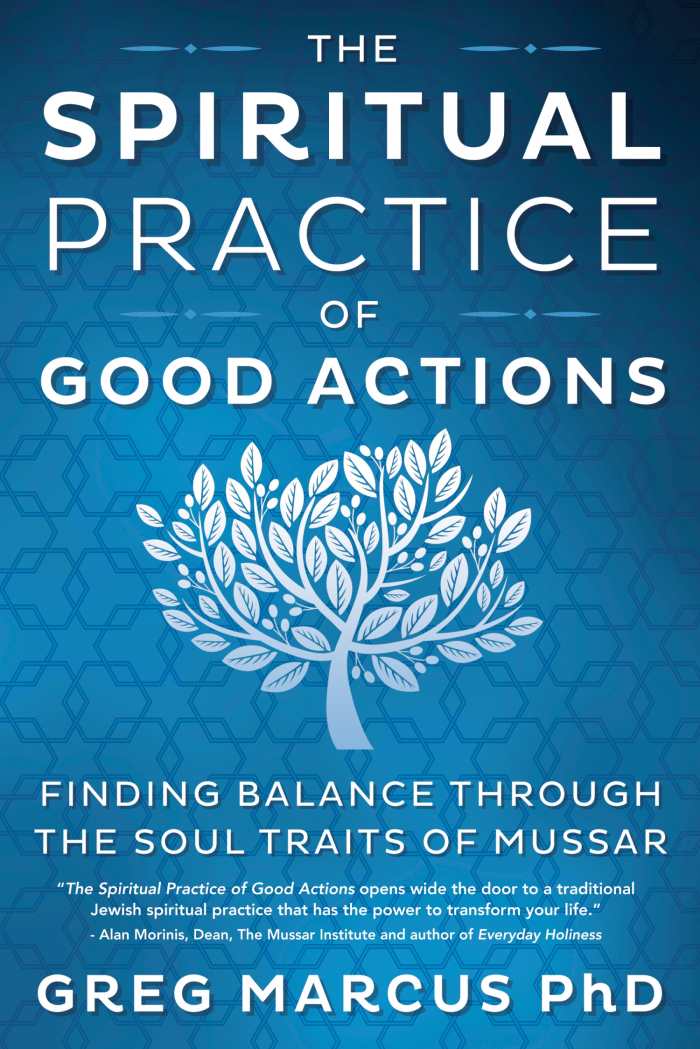
Greg Marcus
Llewellyn Worldwide
Softcover $16.99 (264pp)
978-0-7387-4865-8
Buy: Local Bookstore (Bookshop), Amazon
At a time in his life when he was being torn apart by conflicting commitments to family, faith, and a workaholic lifestyle, Greg Marcus found a treasure trove of wisdom in his own Jewish tradition. His encounter with Mussar, a thousand-year-old Jewish spiritual growth practice based on mindful living, gave him a way to bring his everyday life into alignment with his highest values and aspirations.
Marcus writes that “there is a solid argument that the Jews invented self-help over one thousand years ago.” But Mussar “correction,” or “instruction” in Hebrew or “ethics” in modern Hebrew, is a practice that’s accessible to everyone. Based on universal principles, using real-world examples, and believing that only actions count, Mussar turns the happenings of everyday life into opportunities for spiritual growth, asking us to admit where we are and take the needed step to be a little better than we were the day before.
Teaching that the goal of our life is not to attain tranquility but to actively and mindfully live our lives doing good things, Mussar works on developing thirteen different “soul traits” by isolating one of them for two weeks, then moving on to the next. Daily practice, alone or in community, has three parts: meditation, mindful action, and journaling, all geared toward helping us to recognize our choice points, get out of our comfort zones, and make the better choice.
KRISTINE MORRIS (August 26, 2016)
The Road Back to You
An Enneagram Journey to Self-Discovery
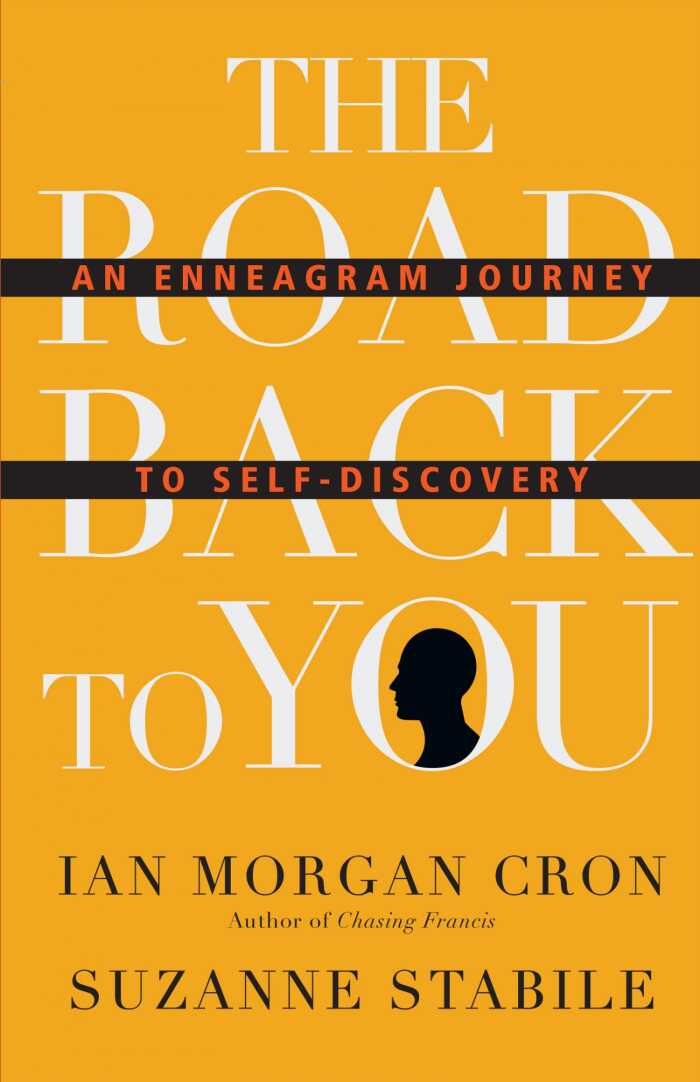
Ian Morgan Cron
Suzanne Stabile
InterVarsity Press
Hardcover $24.00 (220pp)
978-0-8308-4619-1
Buy: Local Bookstore (Bookshop), Amazon
“Life hands us a challenging syllabus. We need all the help we can get,” writes Ian Morgan Cron, who, together with Suzanne Stabile, reveals how the Enneagram, from the Greek words for nine (ennea) and for a drawing or picture (gram), can enrich our lives by enhancing our self-awareness.
Wired for survival at all costs, we learn early on that our survival depends on meeting the expectations of our family, friends, and culture, so we form a protective mask, called a “personality,” or “persona” (Greek for mask), to hide our authentic selves—a mask that, over time, imprisons us. Beneath the mask there lives a “truer, more luminous” self, one that we must come to know if we are to feel fully alive and be whole.
Cron and Stabile walk through the Enneagram’s nine different personality types and their distinct ways of seeing the world, showing how each one has a potentially infinite number of expressions, strengths, and weaknesses.
Cron describes his own Enneagram experience as a feeling of waking up after having been asleep for a long time. He explains that in catching a glimpse of the person he was created to be, he began to see himself with the same delight, pride, and expectation with which God sees him, and to sense the immediacy of God’s grace. “In the spiritual life that’s no small thing,” he writes.
KRISTINE MORRIS (August 26, 2016)
Secrets of the Eternal Moon Phase Goddesses
Meditations on Desire, Relationships and the Art of Being Broken
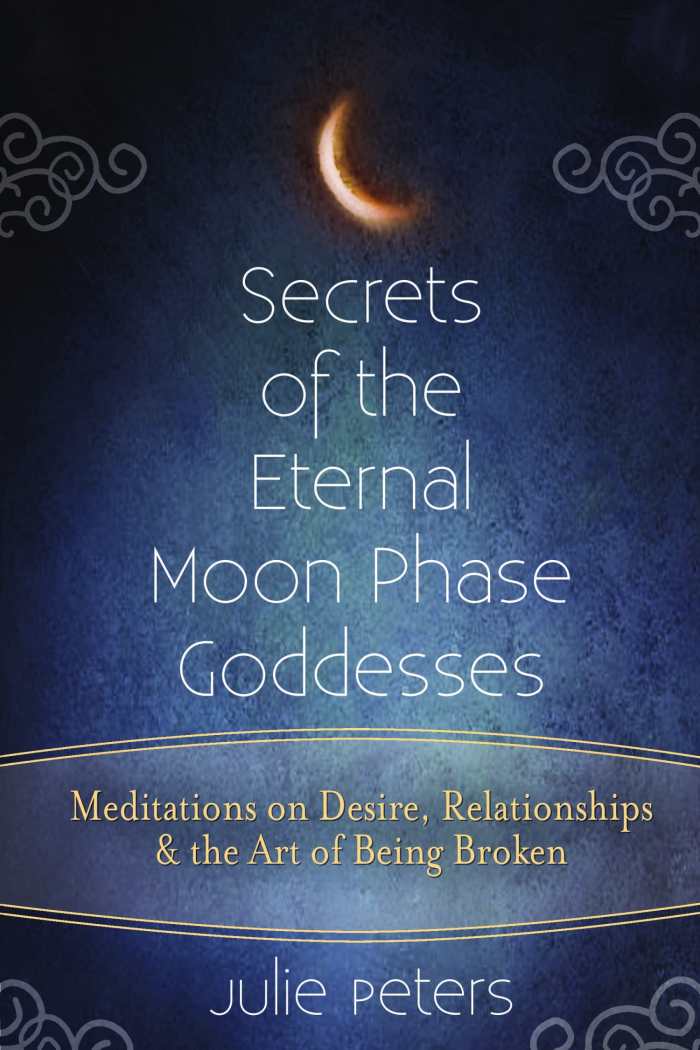
Julie Peters
Skylight Paths
Softcover $16.99 (176pp)
978-1-59473-618-6
Buy: Local Bookstore (Bookshop), Amazon
Breaking up with her partner, the enforced stillness of recovery after being hit by a car, and memories of a past sexual assault by a close friend brought Julie Peters into her own personal experience of being broken. Nothing, not her faith, her yoga practice, or her friends, could help. Moved to write, she chose to write about the art of being broken.
In the Buddhist and Hindu tradition of Shakta Tantra, Peters found something that Western culture had not been able to provide: acceptance, the value of loneliness and solitude, and space in which to be “something other than whole.” Not for the faint of heart, her Secrets of the Eternal Moon Phase Goddesses introduces sixteen beautiful, fierce, playful, and even horrible goddesses that take us out of our comfort zones and into our shadow selves to learn about desire, connection, and separation. The story and meaning of each goddess is followed by deep practices, including meditations, journaling prompts, and more, designed to follow the moon’s cycle.
“These goddesses champion empowerment,” writes Peters. “Empowerment doesn’t only live in places where we feel whole, beautiful, or successful.” Inviting us to explore and embrace the full spectrum of being human, with all its confusion, tumult, loneliness, anger, and despair, as well as its beauty, joy, and hope, Peters calls us to see that life, all of it, is a gift.
KRISTINE MORRIS (August 26, 2016)
Conversations in the Spirit
Lex Hixon’s WBAI ‘In the Spirit’ Interviews

Lex Hixon
Sheila Hixon, editor
Monkfish Book Publishing
Softcover $20.00 (440pp)
978-1-939681-53-9
Buy: Local Bookstore (Bookshop), Amazon
Spirituality has come a long way since the 1970s, when lots of parents worried that Zen Buddhism was a cult. Lex Hixon, who for seventeen years hosted WBAI 99.5 FM’s Sunday morning radio show, “In the Spirit,” in New York City, contributed much to the nation’s understanding of the changes taking place in its spiritual culture. His interviews with spiritual teachers who were bringing what were then strange new ideas and religions from the East to America provided much-needed explanations, addressed the all-too-common misunderstandings, and gave listeners the opportunity to get answers to their questions and put some of their fears to rest.
Deeply spiritual, educated in many spiritual traditions, and immersed in all that was new and alive in ’70s culture, Hixon had hoped to open, with Bernie Glassman, an interfaith center, the House of One People, and serve as its spiritual director; his death from cancer forestalled these plans.
Conversations in the Spirit features interviews with spiritual giants, including Alan Watts, Reb Zalman Schacter-Shalomi, Mother Teresa, Ram Dass, Swami Muktananda, Sheikh Muzaffer Effendi, Bernie Glassman, Huston Smith, J. Krishnamurti, Father Daniel Berrigan, Allen Ginsberg, and many others. It offers a profound and intimate experience of the evolution of religious thought and spiritual growth in America, and a look at how media programming has the potential to serve as an instrument of grace in troubled times.
KRISTINE MORRIS (August 26, 2016)
Kristine Morris

